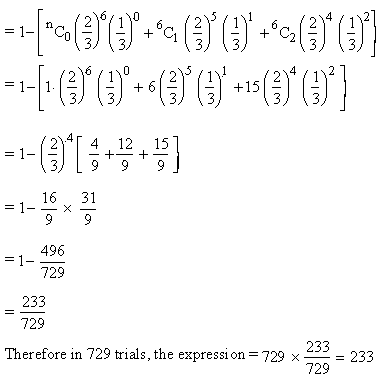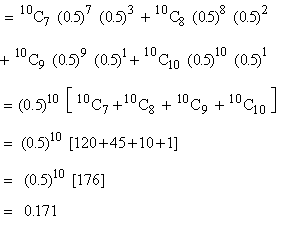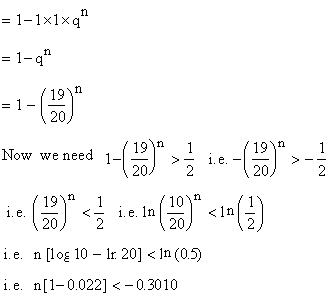
Expected number = n p = 0.4
´ 1000 = 400
Example Six dice are thrown 729
times. How many times do you expect at least three dice to show
5 or 6?
Solution : Let P = probability (showing 5
or 6) = 2/6 = 1/3
q = 1 - p = 1- 1/3 = 2/3
n = 6 and r = 3
Also p (x = r) = probability (at least 3 dice will show 5 or 6 in one trial)
Using the 'complement' theorem
p (x = r) = 1 - [p (x = 0) + p (x = 1) + p (x = 2)]

Therefore in 729 trials, the expression =
Example Take 100 sets of tosses of
10 flips of a fair coin. In how many cases do you expect to get
7 heads at least ? Solution : We have N = 100 sets. n = 10 trials in
each set p = 0.5 and q = 1 - p =0.5
Probability (getting at least 7 heads) in one set
= p (x = 7) + p (x = 8) + p (x = 9) + p (x = 10)

Therefore
in 100 sets = N p (r) = 100 ´
(0.171) @ 17 times you
can expect to get at least 7 heads.
Example If the probability of success
is  How
many trials are required in order that the probability of getting
at least one success, is just greater than How
many trials are required in order that the probability of getting
at least one success, is just greater than 
Solution : 
Let 'n' be the required number of trials
to get the probability of at least one success which
is ,
1 - n C 0 P 0
Q n-0 \
[ since probability (at least one success) = 1 - p (x = 0)
i.e. 1 - probability (No success)]

[next page]
|